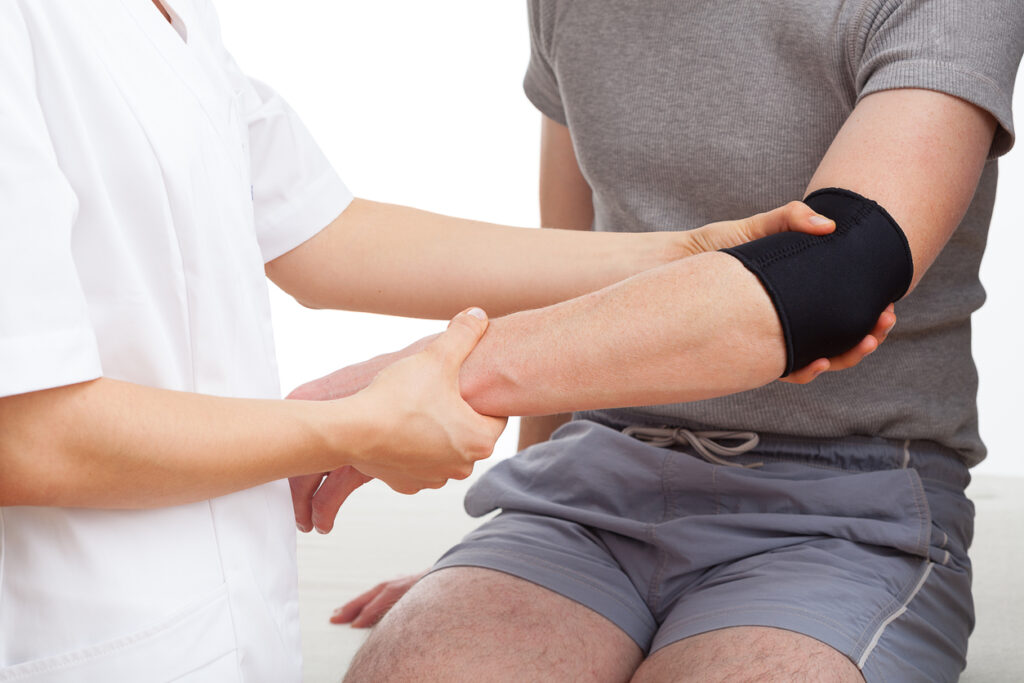by Jeff Kittmer RMT
When working with a competitive tennis club, one of the most common complaints that I encounter is elbow pain; specifically, on the outside of the elbow. This often results from overuse, muscle fatigue, and high force loads during the backhand stroke. Combined with weakened grip strength, you have a recipe for tennis elbow. Tennis elbow is often seen in novice players with poor backhand technique. Wheelchair athletes also experience tennis elbow from strong repetitive gripping during maneuvering and sports.
Tennis elbow is a painful inflammatory condition of the extensor tendons connected to the knobby point on the outside of the elbow (lateral epicondyle of the upper arm). Usually due to repetitive motions of the wrist, arm, and gripping of a racquet. The constant griping puts stress on the muscle’s tendons and can eventually cause microscopic tears in the tissue. The pain can also spread outwards into the forearm and wrist. Although the damage occurs at the elbow, you are likely to experience pain when performing tasks with your hands as well.
The good news is, tennis elbow usually heals on its own with rest. As long as you are able to give your elbow a break. Here are some treatments to speed up the healing process.
Inflammation Reduction
To reduce the pain and swelling caused by inflammation, icing the elbow is recommended. Wrap a towel around something cold and apply to the painful location for a maximum of 20 minutes. When using ice, you may experience a series of sensation stages. I use the acronym CBAN, Cold, Burning, Aching, and Numb. If you reach the aching stage before 20 minutes has ended. Remove the ice and allow the area to rewarm naturally. Reapply the ice every 3 to 4 hours for 2 to 3 days. As well as after performing exercises.
Taping the Elbow
RockTape is my go-to for releasing muscle tension pulling on tendons and bone. To apply the tape, place the muscle into a stretch by straightening the elbow and flexing the wrist. Then lay the tape from the knobby bone on the outside of the elbow (lateral epicondyle) and run it to the outside of the wrist. Next, run a decompression strip just below the elbow wrapping around the forearm using 25% stretch.
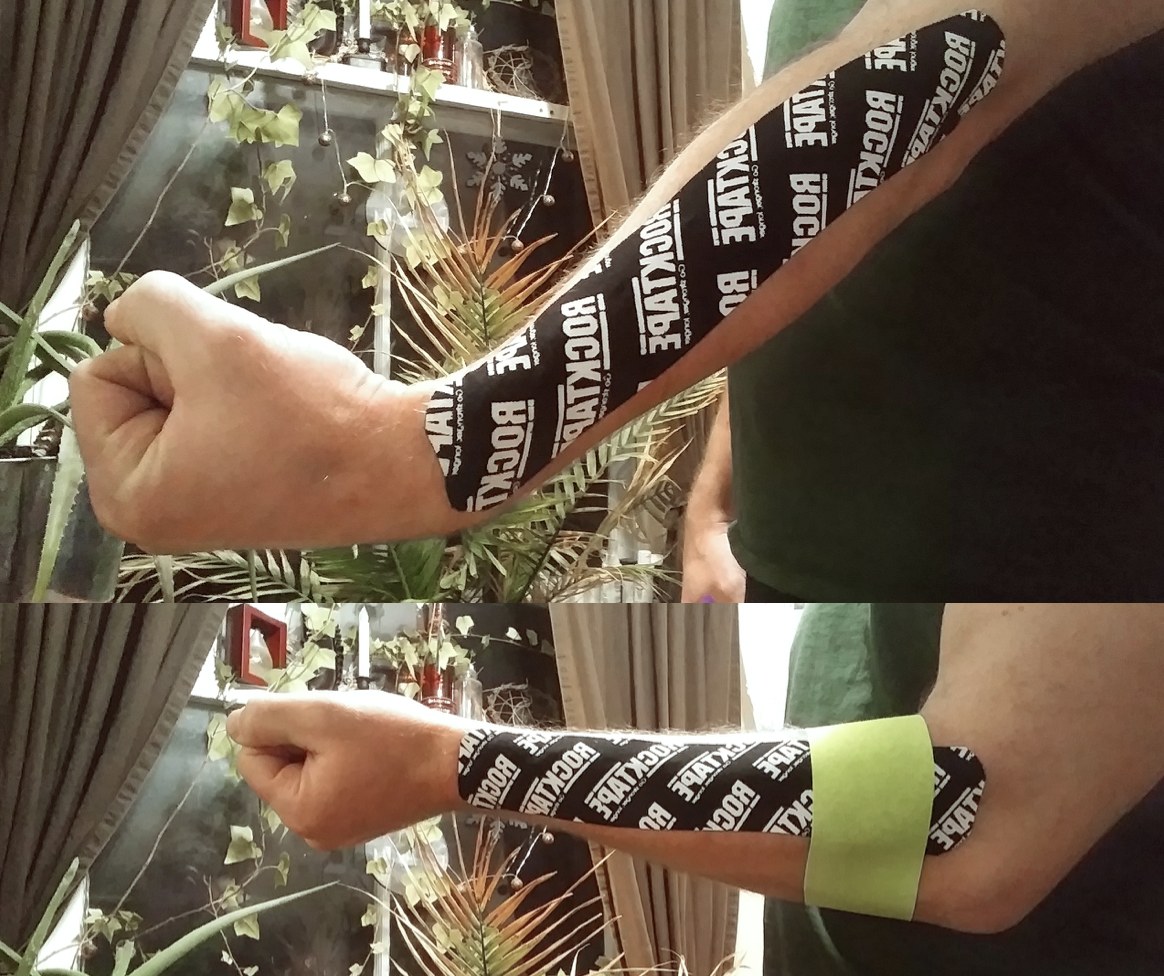
Once the inflammation and tenderness subside, begin gentle exercises to strengthen the muscles of the forearm to prevent recurrence. Don’t begin activities until inflammation has subsided, as it may aggravate the condition. If pain returns after activity, rest and ice the elbow and forearm.
Strengthening
Poor grip strength is a common symptom of tennis elbow. Improving grip strength by building the muscles of the forearm can also help improve your ability to perform daily activities.
Fist Strength
Equipment needed: table and towel
- Sit on a chair and rest the forearm on a table for support. Roll a towel into a log and clasp gently.
- Squeeze the towel and hold for 2 – 3 seconds, then release. Repeating 10 times.
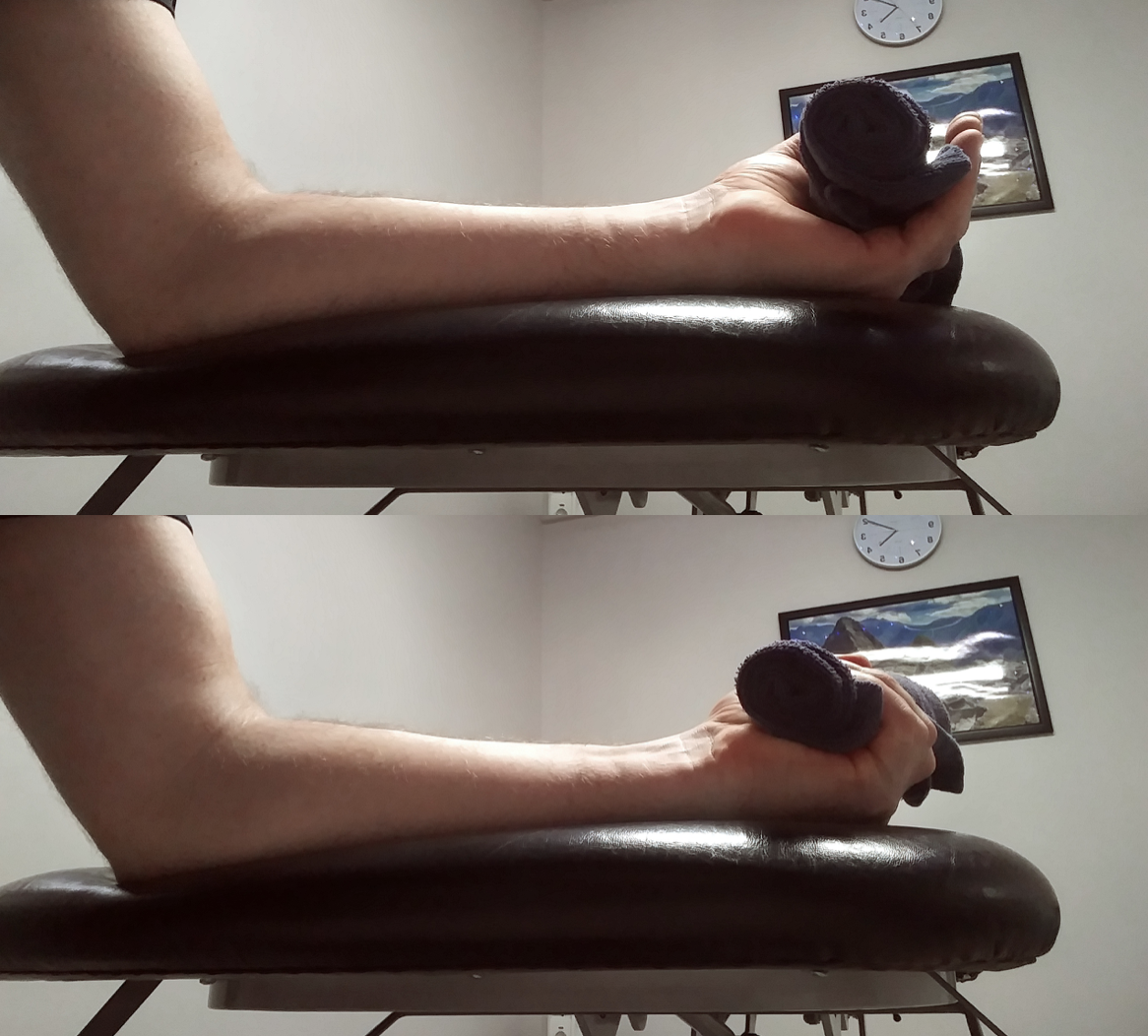
Wrist Strength
Wrist Extension
Equipment needed: RockBand Flex
The wrist extensors are a group of muscles that are responsible for bending the wrist, like when using the hand signal for stop. These small muscles that connect into the elbow are often subject to overuse, especially during tennis.
- Sit in a chair and step on one end of the band, wrap the other end around your hand with your palm facing down, and forearm resting comfortably on the table.
- Keeping your palm facing down, extend your wrist by curling it towards the ceiling.
- Return to the starting position and repeat 10 times on each hand.
- Try to isolate the movement to the wrist, keeping the rest of the arm still.
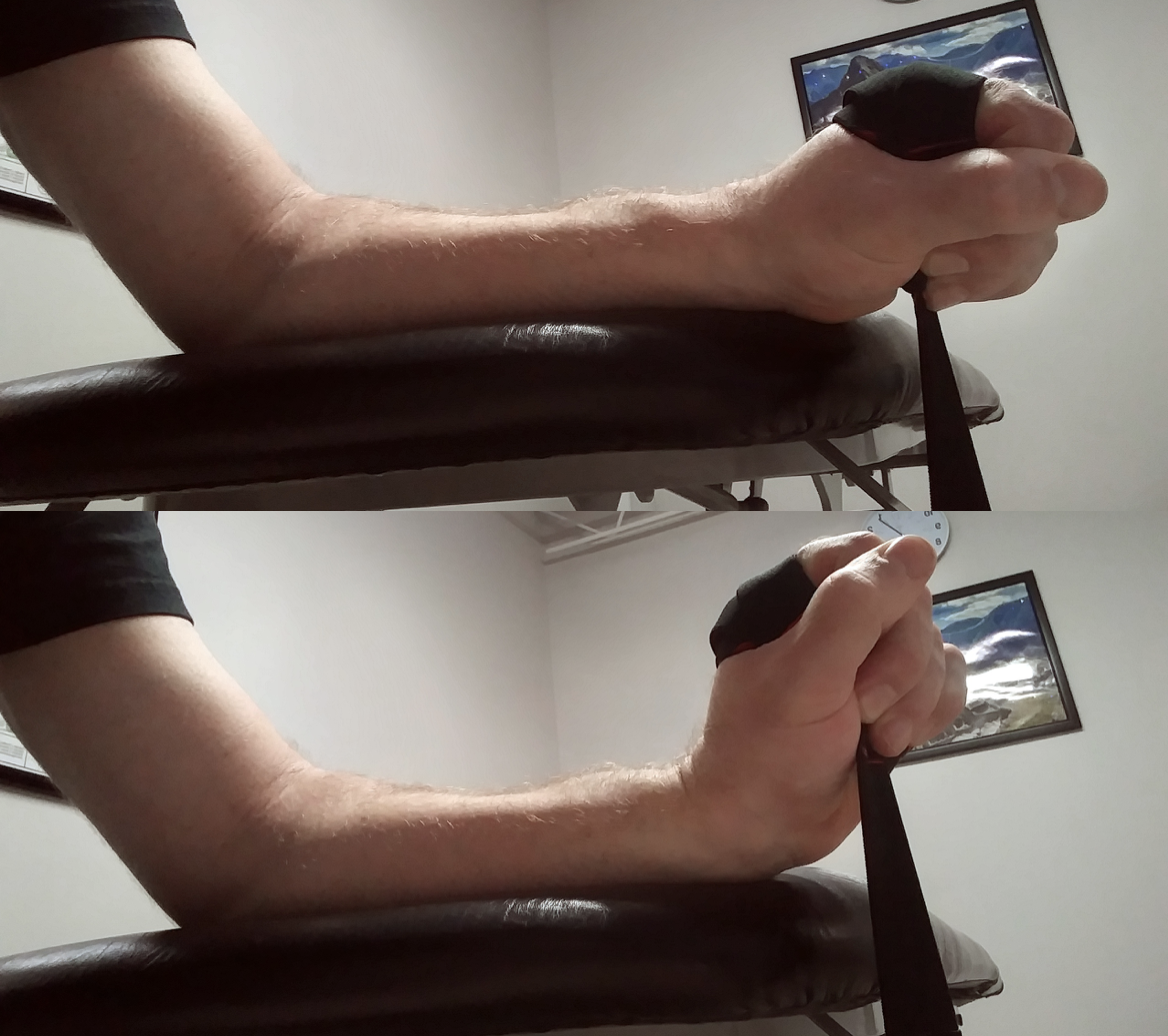
Wrist Flexion
Equipment needed: RockBand Flex
The wrist flexors are a group of muscles that work opposite the wrist extensors. These small muscles that connect into the elbow are also subject to overuse from overhand serving, leading to pain and inflammation.
- Sit in a chair and step on one end of the band, wrap the other end around your hand with your palm facing up and forearm resting comfortably on the table.
- Keeping your palm facing up, flex your wrist by curling it towards your body.
- Return to the starting position and repeat 10 times on each side.
- Try to isolate the movement to the wrist, keeping the rest of the arm still.
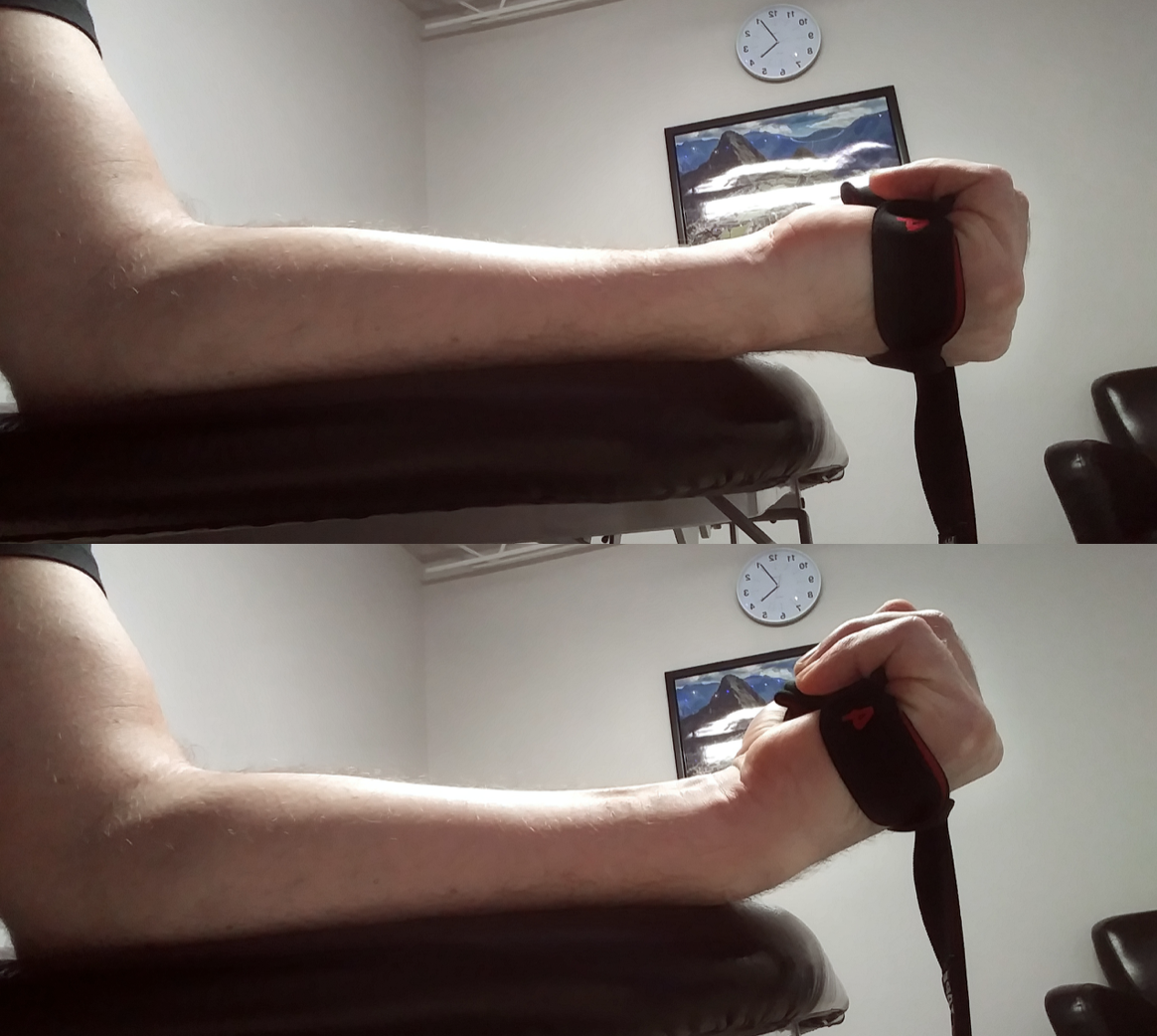
Supinate with Dumbbell
The supinator muscle is a large muscle of the forearm that attaches into the elbow. It is responsible for turning the palm upward and is often involved in movements that can cause tennis elbow.
Equipment needed: Table and Dumbbell
- Sit in a chair holding an appropriately sized dumbbell vertically in your hand with your forearm resting on a table.
- Slowly rotate the arm outward, turning the palm up.
- Rotate the hand back the other direction until your palm is facing downward.
- Repeat 20 times on each side.
- Try to isolate the movement to your lower arm, keeping your upper arm and elbow still.
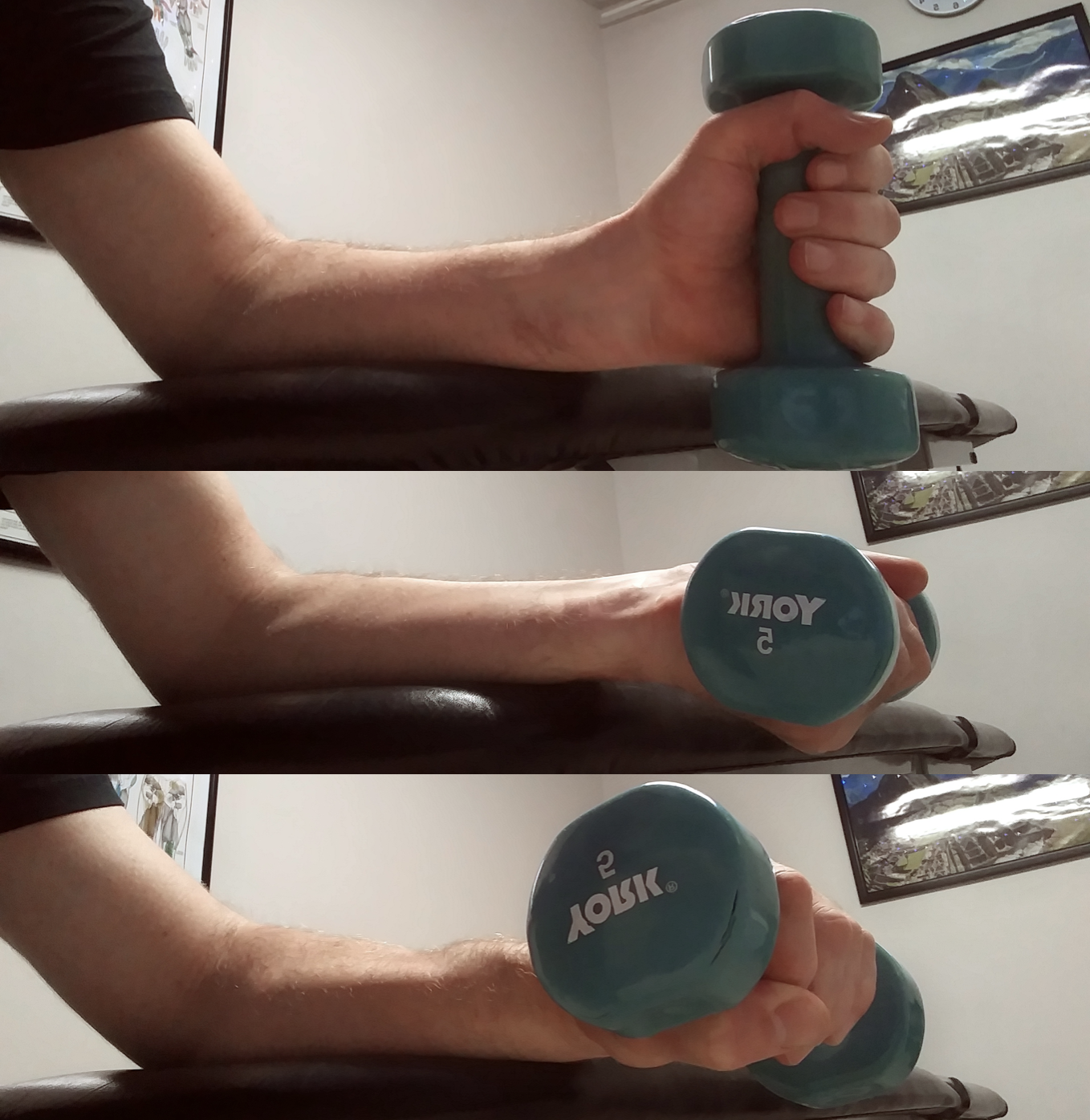
Tennis elbow affects those who compete in a wide variety of sports. As an inflammatory condition caused by repetitive movement and muscle weakness; rest, ice, and local compression will help to alleviate the pain in the beginning. As the pain diminishes, strengthening the weak grip muscles and elbow stabilizers are key in preventing the condition from becoming a chronic issue. If the pain persists and becomes a chronic problem, I would suggest visiting your local healthcare provider for an assessment.
Click here to find a RockDoc in your area!
Click here to shop RockTape!
